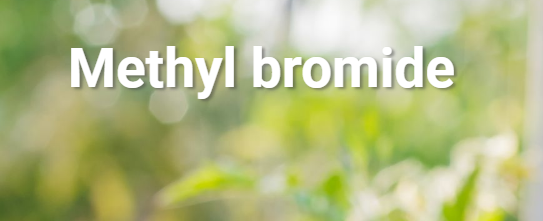Description

Copyright infringement is not intended
Context: According to a new study, the Forest fires fuelled by the El Niño Southern Oscillation (ENSO) phenomenon might be responsible for the short-term spikes in methyl bromide, a known destroyer of the ozone layer.
- ENSO is a climate pattern that switches between warm and cool phases. These patterns, which trigger changes in temperature and precipitation, can be traced back to the waters of the Pacific Ocean.
Methyl bromide
- It is an odourless, colourless gas that has both natural and industrial sources.
- It naturally enters the atmosphere from oceans and forest fires. Human activities can release the gas too.
- Earlier, farmers relied on methyl bromide to keep a wide variety of pests, including fungi, weeds, insects, roundworms and rodents, in check.
- However, in 1995, parties to the Montreal Protocol, an international treaty to phase out chemicals destroying the Earth’s ozone layer, decided to phase out the gas in stages. It took 10 years to completely eliminate the gas.
OZONE PACT
- India has ratified the Kigali Amendment to the 1989 Montreal Protocol for protection of the ozone layer.
- Montreal Protocol, 1989 is aozone-saving agreement that works an extremely potent weapon in the fight against ozone depletion and climate change.
- This is for phasing out compounds called HFCs, which happen to be powerful greenhouse gases.
Montreal Protocol
- The Montreal Protocol on Substances that Deplete the Ozone Layer, is an international environmental treaty for protection of the Ozone Layer by phasing out the production and consumption of man-made chemicals referred to as ozone depleting substances (ODS).
- India became a Party to the Montreal Protocol on Substances that Deplete the Ozone Layer on 19 June 1992 and since then has ratified the amendments to the Montreal Protocol.
- Though the present approval of the Cabinet, India will be ratifying the Kigali Amendment to the Montreal Protocol for phase down of Hydrofluorocarbons.
- India has successfully met the phase out targets of all the Ozone Depleting Substances as per the Montreal Protocol Schedule
The Kigali Amendment
- It was negotiated in the Rwandan capital in October 2016.
- It enables the gradual phase-down of hydrofluorocarbons, or HFCs, a family of chemicals used extensively in the air-conditioning, refrigeration and furnishing foam industry.
- HFCs are known to be much worse than carbon dioxide in causing global warming.
- According to the UN Environment Programme (UNEP), the average global warming potential of 22 of the most used HFCs is about 2,500 times that of carbon dioxide.
- The amendment has already come into force from the start of 2019.
The Kigali Agreement
- In 2016, countries agreed to include HFCs in the list of controlled substances under Montreal Protocol and decided on a schedule for its phase-down.
- Before the middle of this century, current HFC use has to be curtailed by at least 85 per cent.
- Countries have different timelines to do this.
- India has to achieve this target by 2047 while the developed countries have to do it by 2036. China and some other countries have a target of 2045.
- While the reductions for the rich countries have to begin immediately, India, and some other countries, have to begin cutting their HFC use only from 2031.
If implemented successfully, the Kigali Amendment is expected to prevent about 0.5°C rise inglobal warming by the end of this century.
https://www.downtoearth.org.in/news/climate-change/climate-variability-may-explain-annual-spike-in-ozone-destroying-gas-study-82011











